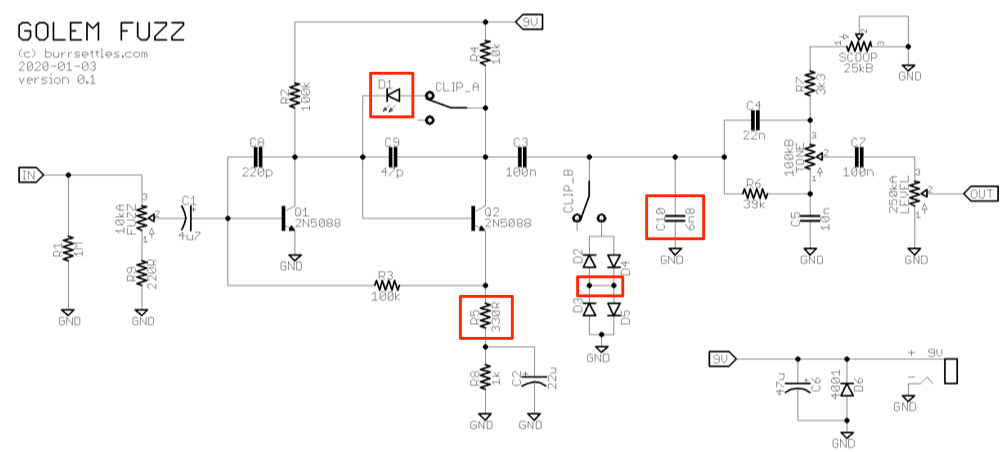Dunno if this is from juansolo or not, but I did manage to track down this blog post which seems to address the question:
https://obsoletetechnology.wordpress.com/projects/studio-electronics/dc-dc-bipolar-power-supply-for-effect-pedals/
The tricks is a DC-DC converter, in particular a LT3467 chip (mouser data sheet). Appears to not be available in a thru-hole package, so tougher for DIY builds. But figure I'd share!
https://obsoletetechnology.wordpress.com/projects/studio-electronics/dc-dc-bipolar-power-supply-for-effect-pedals/
The tricks is a DC-DC converter, in particular a LT3467 chip (mouser data sheet). Appears to not be available in a thru-hole package, so tougher for DIY builds. But figure I'd share!



 ?), I did try wiring things up that way but it didn't matter. Voltage still only seemed to clip in one direction. However, someone on DIYSB reminded me that transistors can be wired as diodes... the 2n5088/89 forward voltage was around vf = .75, way below the LED's (vf = 1.6). When I tried a Si (vf = .62) or Ge vf = .45) diode going from the Q2 base to collector, I did get clipping. So I assume that's what's going on... unless I'm missing something?
?), I did try wiring things up that way but it didn't matter. Voltage still only seemed to clip in one direction. However, someone on DIYSB reminded me that transistors can be wired as diodes... the 2n5088/89 forward voltage was around vf = .75, way below the LED's (vf = 1.6). When I tried a Si (vf = .62) or Ge vf = .45) diode going from the Q2 base to collector, I did get clipping. So I assume that's what's going on... unless I'm missing something?